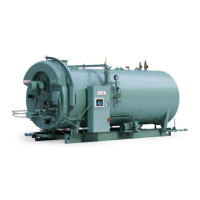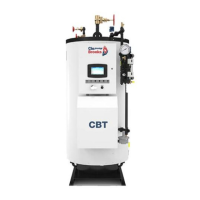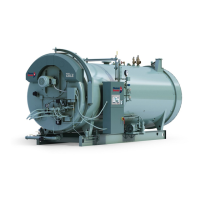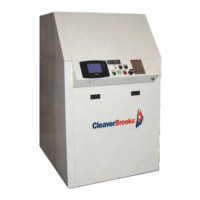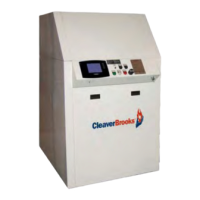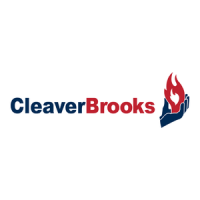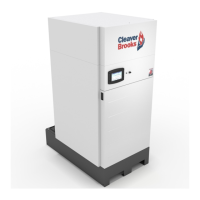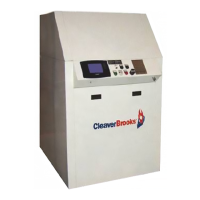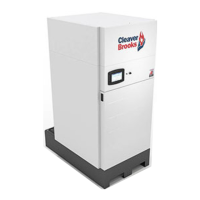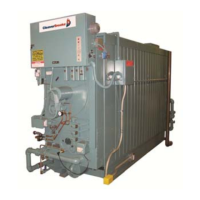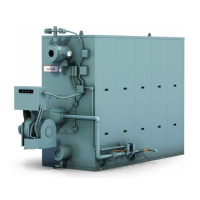Waterside Care
2-2
750-392
CBEX-DE
2.2 — Water requirements - hot water boilers
Air Removal - The hot water outlet includes a dip tube which extends 2 to 3 inches into the boiler. The dip tube
reduces the possibility of air, which may be trapped at the top of the shell, from entering the system. Oxygen or
air released in the boiler will collect or be trapped at the top of the boiler shell.
The air vent tapping on the top center line of the boiler should be piped into the expansion or compression tank.
Air trapped at the top of the boiler will find its way out of the boiler through the tapping.
Minimum Water Temperature - The minimum recommended boiler water temperature is 170 deg F. When water
temperatures lower than 170 deg F are used, the combustion gases are reduced in temperature to a point where
water vapor condenses, causing corrosion in the boiler and possible breeching. Condensation is more severe on a
unit that operates intermittently and which is greatly oversized for the actual load. Condensation can be mini-
mized by maintaining boiler water temperatures above 170 deg F.
Notice
References to hot water boilers in this manual apply only to boilers using 100% water. Glycol solutions have
different operating requirements, circulation rates and temperatures, etc.
Rapid Replacement of Boiler Water - The system layout and controls should be arranged to prevent the possibil-
ity of pumping large quantities of cold water into a hot boiler, which will cause thermal stresses. Water tempera-
ture in a boiler of 200 deg F or 240 deg F cannot be completely replaced with 80 deg F water in a few minutes
time without causing thermal stress. The same fact applies to periods of normal operation, as well as during ini-
tial start-up.
The circulating pumps should be interlocked with the burner so that the burner cannot operate unless the circu-
lating pump is running in order to avoid damage to the equipment.
When individual zone circulating pumps are used, it is recommended that they be kept running-even though the
heat users do not require hot water. The relief device or by-pass valve will thus allow continuous circulation
through the boiler and can help prevent rapid replacement of boiler water with cold zone water.
Continuous Flow Through the Boiler - The system should be piped and the controls arranged to allow water cir-
culation through the boiler under all operating conditions. The operation of three-way valves and system controls
should be checked to be sure that the boiler will not be by-passed. Constant circulation through the boiler
eliminates the possibility of stratification within the unit and results in more even water temperatures to the sys-
tem. A rule of thumb of 3/4 to 1 gpm per boiler horsepower can be used to determine the minimum continuous
flow rate through the boiler under all operating conditions. The operator should determine that a flow of water
exists through the boiler before initial firing or refiring after boiler has been drained.
The isolation valves and the water column piping must be locked open during operation. Failure to do so may result
in a low water condition. Failure to follow these instructions could result in serious injury or death.
!
Warning
